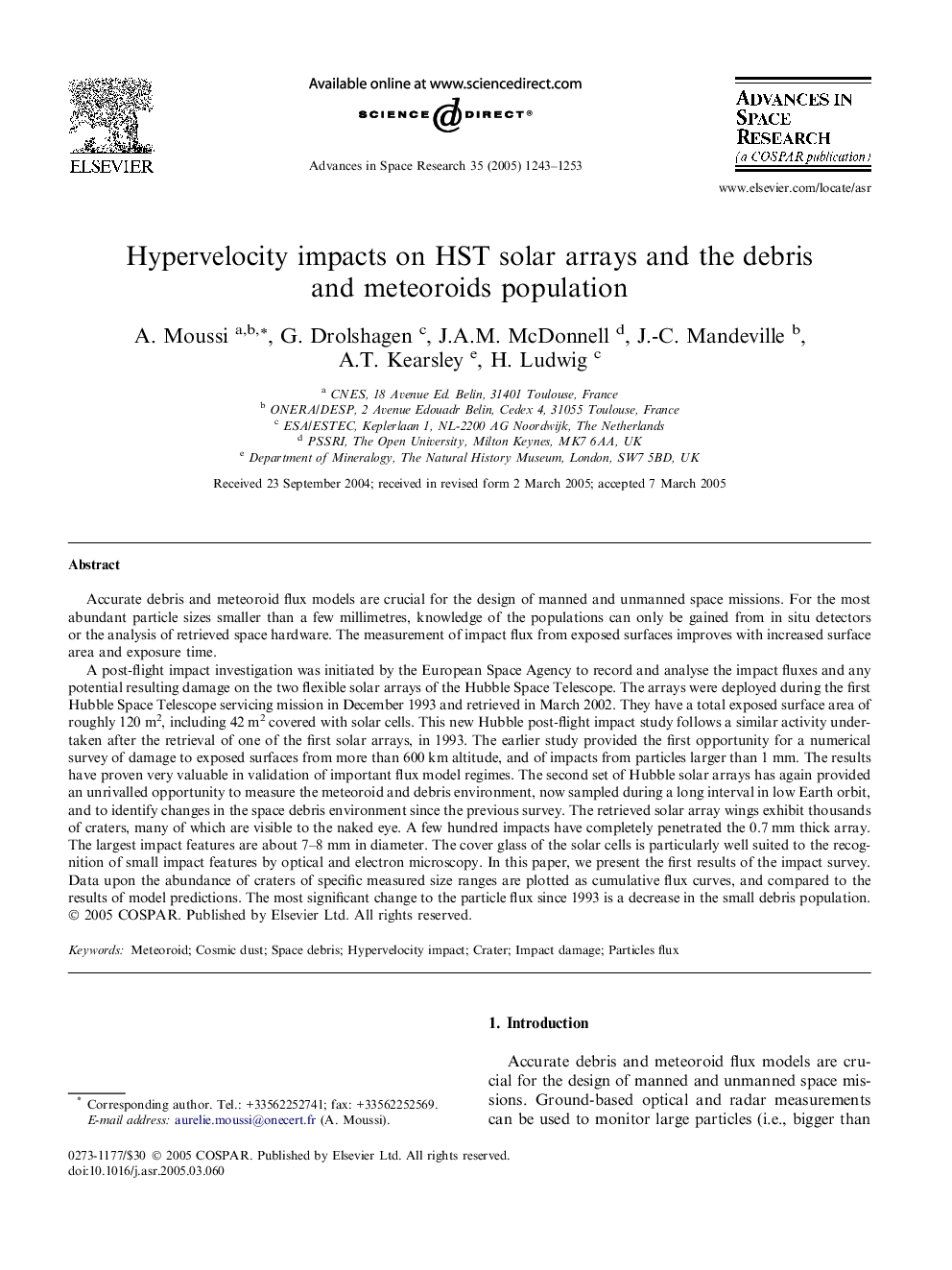| کد مقاله | کد نشریه | سال انتشار | مقاله انگلیسی | نسخه تمام متن |
|---|---|---|---|---|
| 10694541 | 1020215 | 2005 | 11 صفحه PDF | دانلود رایگان |
عنوان انگلیسی مقاله ISI
Hypervelocity impacts on HST solar arrays and the debris and meteoroids population
دانلود مقاله + سفارش ترجمه
دانلود مقاله ISI انگلیسی
رایگان برای ایرانیان
کلمات کلیدی
موضوعات مرتبط
مهندسی و علوم پایه
علوم زمین و سیارات
علوم فضا و نجوم
پیش نمایش صفحه اول مقاله

چکیده انگلیسی
A post-flight impact investigation was initiated by the European Space Agency to record and analyse the impact fluxes and any potential resulting damage on the two flexible solar arrays of the Hubble Space Telescope. The arrays were deployed during the first Hubble Space Telescope servicing mission in December 1993 and retrieved in March 2002. They have a total exposed surface area of roughly 120Â m2, including 42Â m2 covered with solar cells. This new Hubble post-flight impact study follows a similar activity undertaken after the retrieval of one of the first solar arrays, in 1993. The earlier study provided the first opportunity for a numerical survey of damage to exposed surfaces from more than 600Â km altitude, and of impacts from particles larger than 1Â mm. The results have proven very valuable in validation of important flux model regimes. The second set of Hubble solar arrays has again provided an unrivalled opportunity to measure the meteoroid and debris environment, now sampled during a long interval in low Earth orbit, and to identify changes in the space debris environment since the previous survey. The retrieved solar array wings exhibit thousands of craters, many of which are visible to the naked eye. A few hundred impacts have completely penetrated the 0.7Â mm thick array. The largest impact features are about 7-8Â mm in diameter. The cover glass of the solar cells is particularly well suited to the recognition of small impact features by optical and electron microscopy. In this paper, we present the first results of the impact survey. Data upon the abundance of craters of specific measured size ranges are plotted as cumulative flux curves, and compared to the results of model predictions. The most significant change to the particle flux since 1993 is a decrease in the small debris population.
ناشر
Database: Elsevier - ScienceDirect (ساینس دایرکت)
Journal: Advances in Space Research - Volume 35, Issue 7, 2005, Pages 1243-1253
Journal: Advances in Space Research - Volume 35, Issue 7, 2005, Pages 1243-1253
نویسندگان
A. Moussi, G. Drolshagen, J.A.M. McDonnell, J.-C. Mandeville, A.T. Kearsley, H. Ludwig,